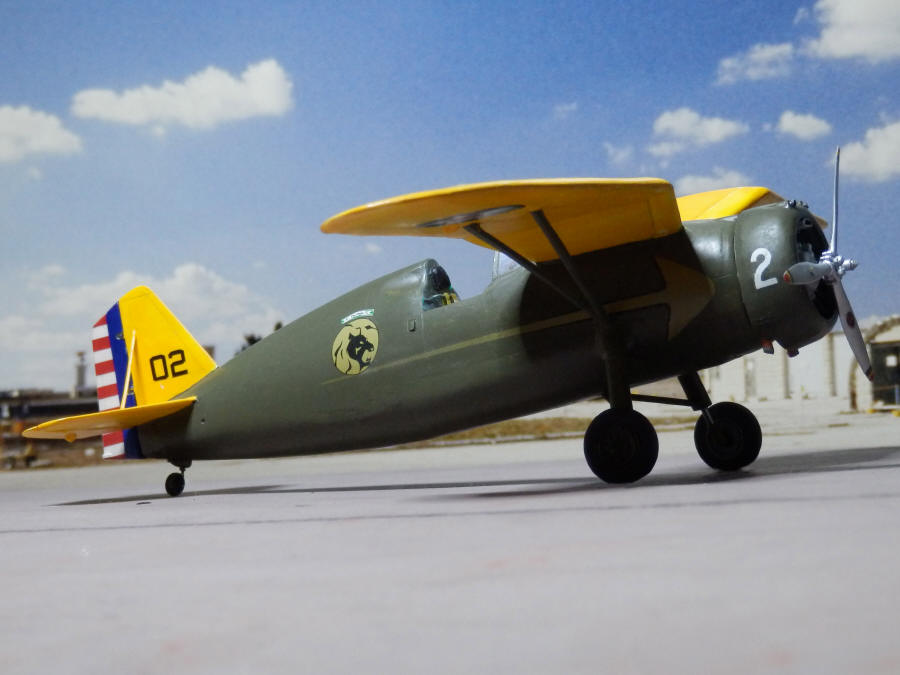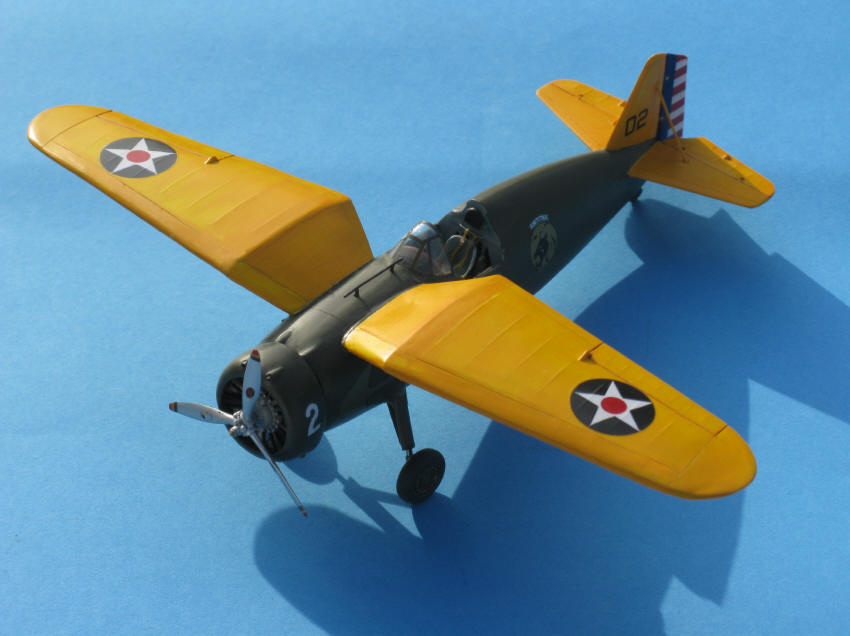|
1.
Plastikmodellbauclub Nürnberg e.V. |
| |
|
|
| |
| Corner X.OP-1A,
single seat observation and fighter aircraft, USAAC 1932 |
| |
The original aircraft:
In the thirties of the 20th century reconnaisance
(observation) aircraft still were two seat biplanes with the observer/cameraman
manning a single machine gun for defense (not always successfully). The Fred W.
Corner Inc. therefore offered the US Army Air Corps a single seat monoplane
aircraft that could fulfill observations tasks and by installation of two
forward firing machine guns was also able to meet hostile
encounters on even terms. The cranked monoplane configuration also offering
higher speed and better sight over and below the wings. A generously dimensioned
tank guaranteed the necessary range. The camera, installed in the rear
fuselage, could also provide oblique shots by downing one wing.
The
US Army Air Corps was impressed and ordered five aircraft for evaluation under
the then new designation X.OP-1A (experimental, observation, pursuit). The first
one flew Feb. 16th 1932 and quickly showed an improvement in all categories, its
suitability as long range fighter being considered the best virtue, while pilots
were fond of the excellent sight. Nevertheless great scale production failed.
Corner didn't have adequate production facilities and rejected the tought of
license production. The fate of the machines already delivered is unknown.
The model:
To
expect a kit of this rather unknown aircraft would go too far. But the fuselage
of a 1/48 J2M3 Raiden could be - suitably modified - used, Accurate
Miniatures delivering motor, cowling and airscrew of a F3F-2. The rest was
scratch buliding with emphasis on the fabric covered wings and empennage.
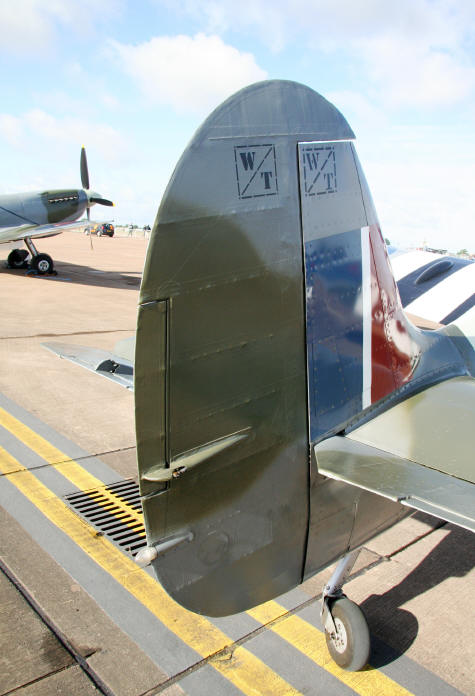 |
| photo: Petr Buchar |
|
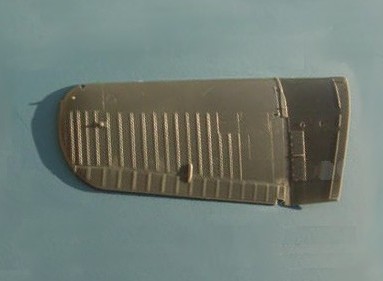 |
| Not this way! - SB2U-3 by Accurate
Miniatures |
|
| |
|
Making home made fabric covering may seem extremely difficult,
but in contrary it's fairly easy if built according to the appearance real
fabric covering has. Just see the Spitfire Mk. IX at left. Unlike many kits
there are no wave like depressions and also no protuding ribs à la Cessna.
Fabric covering is very taut like drum skin, only minimal protusions showing the
ribs beneath (in case of the Spitfire the rivets show most). Sometimes narrow
cloth strips were added to protect the sewing, but as they were very thin only
discernable from the near. - Never were there beams to be seen. |
|
How it was made
:
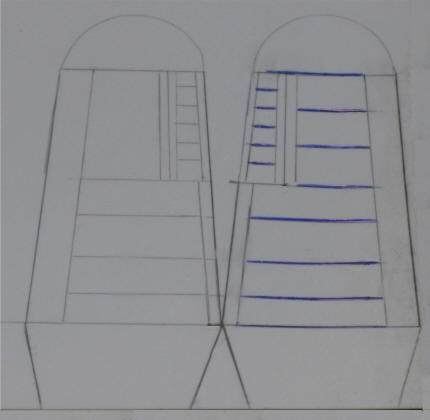 |
|
Left: lines where to print, right: depressions made with a ball pen |
|
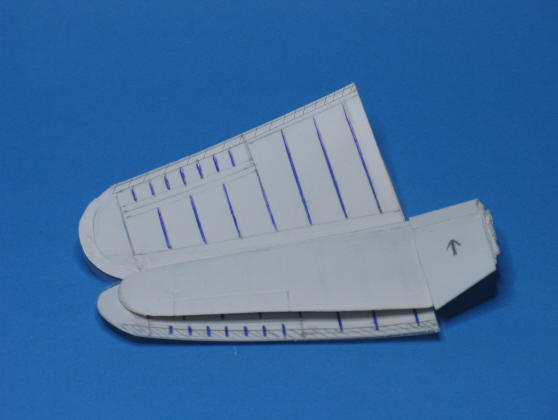 |
|
core and covering before cementing, rear edges need to
be thinned down before |
|
In principle: A core (materiel unimportant, i.e. balsa, kit part filed
thinner) is laminated with thin plastic sheet, this having the ribs impressed
from the underside. Thickness maximum 0,2 millimeters. Some other materiel may
be used as well.
In
Detail see page "Fabric
Covering"
In my case the plastic reminded me that thin edges of the core could result in a
break. But nil desperandum! A narrow plastic strip was fixed to two strips
of wood, then heated over a toaster and when suitably soft laid (not forcefully
pulled) around the leading edge of the wing. After ist had cooled down this part
was cut to size and glued in. Top and bottom parts to follow.
As this model is unique the chance that another modeller will try to build it is
nearly nil I think I can spare further explanations. Just one point seems
important: When forming a cockpit hood is needed forget carving and filling a
balsa block! - Balsa was only needed in WW II time and shortly afterwards. Today
use of polyester (repair-) putty makes things far more easier. See German
page weC (english text) "Cockpithauben".
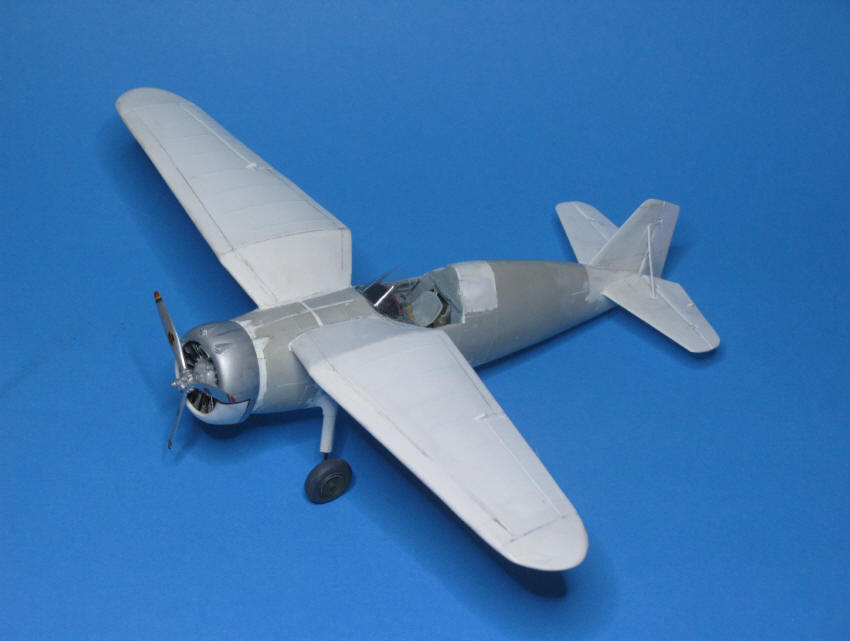 |
| completed model before painting, parts in
white (except cowling) and cockpit are scratch made |
|
Alternatively you could incorrect representations of fabric covering as
follows: |
|
a) Far to prominent ribs: Sand off everything, then apply masking tape,
leaving a narrow slit where a rib was; fill in evenly with thinned putty, let dry,
and after removal of the tape blend in. |
|
b) Too deep waves: Fill in with putty until there is a smooth surface, the
ribs should be barely visible; after this has dried, sand slightly
with fine sandpaper; as putty tends to shrink after some time the ribs will
reappear in a very delicate way, just like in the original. |
Colors: Revell
(no others available) Yellow and Black to create Oive Drab, Yellow
and a tiny bit of Bright Red for Orange Yellow. No "ageing" as these Corner
aircraft were factory fresh (besides: as "aged" - worn- fabric covering
could tear apart in flight no pilot in sane mind would man such an aircraft).
Final remark: Sorry, neither the Fred W. Corner Inc. nor this
aircraft did ever exist. It's an invention, but with a serious background: When
asking myself what to do with a surplus Raiden kit the question arose, what kind
of new aircraft it should be. When deciding "early thirties" the next
question was which kind of aircraft made sense, which construction thoughts an
engineer of this time would have had. - Well, and so there was to tell, how
fabric covering looks like and how it was to make in model form. For
your next model with exaggerated fabric covering.

